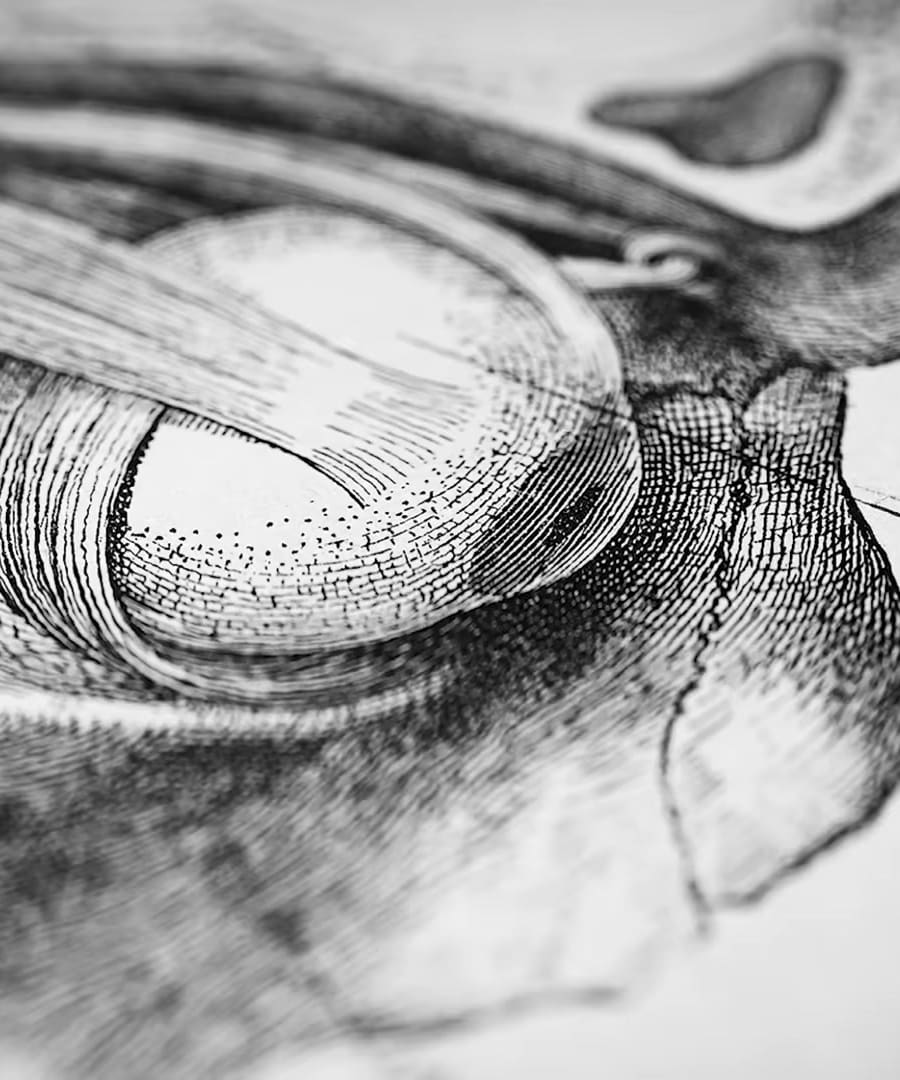Is a short walk befor bed beneficial for sleep?
Sources:
A short walk before bed can be beneficial for improving sleep quality. According to , incorporating short walks, even as brief as 5-10 minutes, into your routine can be a valuable strategy. These "exercise snacks" or brief bouts of activity can positively impact your physiology and overall well-being, aiding in better sleep 1.
Similarly, highlights that winding down before bedtime with a light activity, such as a walk, can help with the transition into sleep. Walker emphasizes the importance of a wind-down routine to decelerate the body's physiological processes, likening it to landing a plane rather than flipping a light switch 2. Walking, being a form of light exercise, can serve as an effective wind-down method.
RELATED QUESTIONSHey how is the relationship between the immune system and the skin. Especially Acne
Sources:
The relationship between the immune system and the skin, particularly in the context of acne, is significant. discusses how the skin reflects the status of other organs and systems, including the immune system. When the immune system is activated, it can manifest through various skin conditions like acne 1.
Acne commonly impacts about 80-90% of young people and can be triggered by multiple factors such as hormonal changes, particularly androgens like testosterone, which increase sebum production. This sebum can clog hair follicles and lead to bacterial infections, resulting in inflammation and acne 2. Additionally, mentions the importance of controlling diet, particularly avoiding high glycemic foods that elevate insulin and blood glucose levels, which can exacerbate acne through inflammatory pathways 3.
Moreover, the gut microbiome plays a crucial role in maintaining skin health. A healthy gut can reduce overall inflammation, which often improves skin conditions like acne. Consuming low sugar fermented foods can enhance gut health and, in turn, positively affect the skin 4.
In summary:
- Hormones: Increased androgens lead to more sebum, clogging pores and causing acne.
- Diet: High glycemic foods spike insulin and glucose, worsening acne via inflammatory pathways.
- Gut Health: Enhancing gut microbiome reduces inflammation and improves skin health.
Taking these factors into account can help manage and potentially reduce acne through a comprehensive approach that includes hormonal balance, diet management, and gut health maintenance.
RELATED QUESTIONSWhat dietary changes can help reduce acne?
Sources:
discusses several dietary changes that can help reduce acne by minimizing inflammation and controlling insulin levels:
-
Minimize Processed Foods:
- Advanced Glycation End Products: These are present in processed foods like crackers and chips, causing inflammation that exacerbates acne and other skin conditions 1.
- High Heat Preparation: Foods cooked at high temperatures, like fried foods, can increase inflammation. Consuming such foods can lead to more frequent breakouts 2.
-
Low Glycemic Foods:
- Avoid High Glycemic Load Foods: Diets inducing high insulin and glucose levels activate pathways exacerbating acne, including mTOR and increased androgen production leading to higher sebum production 3.
-
Gut Health:
- Low Sugar Fermented Foods: Consuming foods like kimchi, sauerkraut, and pickles can enhance gut microbiome health, helping reduce inflammation and improve skin health 4.
-
Whole Foods:
-
Reduce Specific Food Groups:
- Dairy: Low-fat and non-fat dairy products with emulsifiers can spike insulin more than full-fat dairy. If dairy contributes to your acne, it might be better to reduce consumption or switch to full-fat options 5.
-
Hydration:
- Proper Hydration: Drinking enough water and maintaining hydration can lower inflammation levels and positively impact skin health 4.
-
Fiber:
- High Fiber Intake: Incorporate prebiotic and probiotic fibers from fruits, vegetables, and whole grains to support a healthy gut microbiome, which can reduce skin inflammation 1.
By implementing these dietary changes, you can help manage and reduce acne symptoms. Always consider personalizing these dietary adjustments based on individual responses and consulting a healthcare provider for tailored advice.
RELATED QUESTIONS-
What is the role of Gabba in anxiety?
Sources:
GABA (gamma-aminobutyric acid) is an inhibitory neurotransmitter that plays a crucial role in managing anxiety and maintaining neural balance. Here are some key points discussed by regarding GABA's role in anxiety:
-
Inhibitory Effects: GABA helps in quieting certain neuronal pathways, which generally leads to the suppression of neural activity. This inhibition is linked to lower levels of anxiety and a sense of calm 1.
-
Balancing Neural Circuits: GABA is vital in creating balance within neural circuits. An imbalance, where GABA levels are low, can lead to runaway excitation of circuits, which is evident in conditions such as epilepsy 1.
-
Anxiolytic Effects and Supplements:
- Kava: This compound increases GABA levels, providing potent anxiolytic effects. Studies have shown that Kava can significantly reduce anxiety symptoms by enhancing GABA activity in the brain 2.
- L-Theanine: Known to increase GABA, L-Theanine has been shown to enhance relaxation and reduce anxiety. It blunts the stress response and supports sleep by reducing the activity of the forebrain involved in thinking and rumination 3.
In essence, GABA plays a fundamental role in reducing anxiety by inhibiting neural activity and maintaining balance within the brain's circuits. Supplements like Kava and L-Theanine can potentially help increase GABA levels, thereby offering some relief from anxiety symptoms. Always consider consulting a healthcare professional before starting any new supplements.
RELATED QUESTIONS-
What are the effects of low GABA?
Sources:
Low GABA levels can have several profound effects on the brain and mental health. discusses the following impacts of GABA deficiency:
-
Increased Anxiety: GABA is an inhibitory neurotransmitter that helps to quiet neuronal pathways and reduce neural activity. Low levels of GABA lead to less inhibition, resulting in heightened anxiety and an imbalance within various neural circuits 1.
-
Runaway Excitation: A lack of GABA can cause excessive neuronal firing, which is evident in conditions like epilepsy. This hyperexcitability can lead to seizures, indicating how critical GABA is for maintaining neural stability 1.
-
Balance Issues: GABA is crucial for the balance between excitatory and inhibitory signals in the brain. Low GABA disrupts this balance, leading to problems in neuroplasticity and overall brain function 2.
-
Depression and Mood Disorders: Deficient GABA levels can contribute to the symptoms of major depressive disorders, especially in cases where conventional antidepressants are ineffective. Increasing GABA activity through dietary modifications or other means can sometimes provide relief for these symptoms 2.
Overall, maintaining adequate GABA levels is essential for managing anxiety, preventing seizures, and promoting mental health stability.
RELATED QUESTIONS-
Should you do light exercises such as walking when you have a mild cold?
Sources:
Currently, there are no specific retrievals from directly addressing whether light exercise such as walking is advisable when you have a mild cold. However, a general understanding from health science usually suggests that light exercise might be beneficial as long as your symptoms are above the neck (e.g., a runny nose, nasal congestion, mild sore throat). Engaging in moderate activities like walking can potentially help in maintaining circulation and enhancing the immune response without overstressing the body.
For a precise and informed decision based on scientific insights, please consult a healthcare professional and look for specific recommendations in Andrew Huberman's relevant discussions or future episodes.
RELATED QUESTIONSWhat other tips help with a mild cold?
Sources:
To help manage a mild cold, here are some tips from the insights shared on the :
- Stay Hydrated: Ensure you are drinking plenty of fluids to stay hydrated. This helps thin mucus and alleviate congestion.
- Rest: Allow your body to rest and recover. Adequate sleep can boost your immune system.
- Nutrition: Eat healthy, balanced meals rich in vitamins and minerals to support your immune system.
For recovery and potentially alleviating symptoms, suggests using cooling techniques. Specifically, cooling the face, palms, or bottoms of the feet using cold water or ice packs can improve recovery and comfort without causing vasoconstriction, which can happen when large areas of the body are exposed to cold. This method may be beneficial not just post-exercise but also for symptomatic relief during a mild cold 1.
Always consult with a healthcare provider for personalized advice, especially if symptoms worsen.
RELATED QUESTIONSHow can I support wund healing
Sources:
Supporting wound healing involves a few strategies, many of which hinge on managing pain effectively.
Pain Relief and Healing
highlights a principle from sports medicine where applying pressure above and below the site of an injury can alleviate pain. This technique often utilizes tape and is based on the gate theory of pain. According to this theory, stimulating A fibers by rubbing or applying pressure can inhibit the C fibers, which convey pain information, through the release of the neurotransmitter GABA. This reduces pain and can aid in healing by minimizing discomfort and promoting proper tissue function 1.
Practical Tips
- Hydration and Nutrition: Ensure adequate hydration and a balanced diet rich in vitamins and minerals to support the body's natural healing processes.
- Hygiene: Keep the wound clean and protected to prevent infection, which can delay healing.
- Rest and Recovery: Allow the affected area to rest to facilitate proper tissue repair.
Always consult with a healthcare provider for personalized advice on wound care and healing.
RELATED QUESTIONSWhat about protein intake
While there are no specific clips available directly discussing protein intake in relation to wound healing from the , we can reference general knowledge. often emphasizes the importance of nutrition in overall health, recovery, and tissue repair.
Protein and Wound Healing
Protein is crucial for wound healing as it plays a significant role in tissue repair and the production of enzymes and immune factors. Increasing protein intake can support the body’s needs during the healing process:
- Supports Tissue Repair: Protein provides the building blocks (amino acids) necessary for the synthesis of new tissue.
- Boosts Immune Function: Adequate protein helps maintain a robust immune system, which is essential for preventing and fighting infections in wounds.
- Improves Collagen Formation: Collagen, a protein, is vital for wound strength and healing.
Recommendations
- Include High-Quality Protein: Foods like lean meats, fish, dairy, eggs, and plant-based proteins (beans, lentils, tofu) are excellent sources.
- Balanced Diet: Integrate protein with a variety of vegetables, fruits, and whole grains to ensure a supply of all necessary nutrients, including vitamins and minerals that aid in healing.
- Hydration: Proper hydration is essential for nutrient transport and cellular functions.
For optimal results, consult with a healthcare provider or a nutritionist to tailor protein intake to individual needs and circumstances.
RELATED QUESTIONSHow much protein do I need daily?
Sources:
According to advice shared on the , protein intake recommendations can vary based on your goals, age, and health status:
-
General Guideline: Dr. Andy Galpin suggests consuming at least 1 gram of protein per pound of body weight to support recovery and muscle maintenance 1.
-
Optimal Muscle Health: Dr. Gabrielle Lyon recommends around 1 gram of protein per pound of target body weight. If you weigh 200 pounds and aim for 180 pounds, you should ingest approximately 180 grams of quality protein per day, divided into meals containing 30-50 grams of protein each 2.
-
Elderly and Aging Population: As we age, our efficiency in utilizing protein decreases. Older adults may need to consume 40-50 grams of protein per meal to stimulate muscle protein synthesis effectively 3.
-
Women’s Health: During menopause, women benefit from higher protein intake. Studies suggest consuming around 1.5 to 1.7 grams per kilogram of lean body mass, as higher protein intake correlates with reduced frailty 4.
For specific nutrient needs or individualized plans, consulting with a healthcare provider or nutritionist is recommended.
RELATED QUESTIONS-
How to support the body and the immune system while wund healing
Sources:
To support the body and immune system during wound healing, offers several strategies:
-
Positive Mindset and Dopamine:
- A sense of hope and positive outlooks, which are tied to the dopamine system, significantly enhance healing rates. Activities that increase dopamine, like thinking about a positive future, can activate the mesolimbic reward pathway, reducing inflammatory cytokines and improving recovery 1.
-
Gut Microbiome:
- Maintaining a healthy gut microbiome is crucial for a robust immune system. Consuming 2-4 servings of low-sugar fermented foods daily like sauerkraut, kimchi, kefir, kombucha, and yogurt supports gut health and enhances immune function 2.
-
Quality Sleep:
- Prioritize getting deep, quality sleep to boost the immune system. Sleep plays a vital role in supporting the immune response, especially slow-wave sleep which is predominant in the early part of the night 3.
-
Cold Water Exposure:
- Cold water exposure (e.g., cold showers or ice baths) can significantly boost dopamine and epinephrine levels, aiding the immune system. Aim for 3-10 minutes in uncomfortably cold water to effectively increase dopamine levels and support healing 1.
-
Exercise:
- Regular exercise, tailored appropriately, can enhance the immune system. Three bouts of cardiovascular exercise (varying in duration) and resistance training per week are recommended. However, avoid over-exercising as it can deplete the immune system 4.
-
UVB Light Exposure:
- During winter months, ensure sufficient UVB light exposure to support spleen function and immune system activation. UVB light also boosts skin, hair, and nail health by enhancing the turnover of stem cells in these tissues 5.
These methods collectively support wound healing and strengthen the body's immune system. Always consult a healthcare provider before making significant lifestyle changes.
RELATED QUESTIONS-
What foods improve wound healing?
Sources:
To support wound healing through diet, emphasizes several key foods and dietary practices:
Foods Rich in Tryptophan
- Turkey: Known for its high tryptophan content.
- Milk: Particularly whole milk contains a good amount of tryptophan.
- Canned Tuna: Another excellent source of tryptophan.
- Oats: Incorporating oatmeal can help.
- Cheese: Especially cheddar cheese is rich in tryptophan.
- Nuts and Seeds: They also provide tryptophan.
- Chocolate and Specific Fruits: Bananas and apples, though less potent, are beneficial sources 1.
Anti-inflammatory and Gut-friendly Foods
- Non-Processed or Minimally Processed Foods: Minimizing processed food intake helps reduce inflammatory responses that can hinder wound healing.
- Prebiotic and Probiotic Fiber: Foods like fruits, vegetables, and some grains support gut microbiome health, which is crucial for overall body function and healing.
- Low-Sugar Fermented Foods: Sauerkraut, kimchi, and pickles (refrigerated types in brine) promote a healthy gut, aiding the immune system and supporting wound healing 2.
These dietary choices create a nutritional environment conducive to faster and more effective wound healing.
RELATED QUESTIONSWhat is good for gut health
Sources:
For optimal gut health, and his guests recommend focusing on specific foods and dietary practices that support a diverse and healthy microbiome:
High-Fiber Foods
- Whole Grains: Such as oats, barley, and quinoa.
- Legumes: Beans, lentils, and peas.
- Vegetables and Fruits: Provide essential fiber; include a diversity like greens, carrots, apples, and berries.
- Nuts and Seeds: Almonds, flaxseeds, chia seeds, etc.
Fermented Foods
- Yogurt: Preferably with live cultures and low sugar.
- Kefir: Fermented milk drink with probiotics.
- Sauerkraut and Kimchi: Fermented cabbage with beneficial bacteria.
- Pickles: Specifically, those that need refrigeration like brined pickles.
- Natto and Miso: Fermented soybean products.
Probiotic-Rich Foods
- Polyphenols: Found in colorful fruits and vegetables, teas, cocoa, and spices, which the microbiome ferments.
- Low-Sugar Fermented Foods: Include foods like sauerkraut, kimchi, Greek yogurt, and kombucha with live cultures.
Prebiotics
- Prebiotic Fiber: Such as inulin found in chicory root and garlic, onions, and bananas which feed good gut bacteria.
Recommendations
- Regular Consumption: Aim for 2-4 servings per day of low-sugar fermented foods to enhance microbiome diversity and reduce inflammation.
- Food Combinations: Combining fiber with fermented foods might offer synergistic benefits 1 2 3 4 5.
- Avoid Overuse of Antiseptics: Such as mouthwashes and frequent hand sanitization, as they can harm beneficial bacteria 6.
These practices bolster the gut microbiome, supporting overall health including improved immune function and reduced inflammation.
RELATED QUESTIONSHow to recover the fastest from a severe dog bite
Sources:
To recover quickly from a severe dog bite, and guest provide several strategies focused on aiding recovery from injuries, which can be applied to dog bites:
Physical Therapies
- Compression: Using compression garments or boots can help by moving fluids in and out of the tissues, promoting blood flow and nutrient delivery, and removing waste products. This can also include massages or other forms of bodywork to achieve similar effects 1.
- Cold Water Immersion: Ice baths or cold water immersion can reduce inflammation and muscle soreness, thus it may speed up recovery. However, this should be used thoughtfully, considering its effects on muscle adaptation 1.
Nutritional Support
- Increase Calorific Intake: Injury can increase basal metabolic rate by up to 10%. Therefore, increasing calorie intake by a similar percentage can support recovery. This helps the body with the increased energy demands required for the healing process 2.
- Protein Intake: Ensure a sufficient intake of protein, at least 1 gram per pound of body weight, to provide the necessary amino acids for tissue repair and regeneration 2.
- Micronutrients: Maintain a balanced intake of vitamins and minerals, important for overall healing processes.
General Guidelines
- Clean and Protect the Wound: As advised by health practitioners, keeping the wound clean and protected to prevent infection is critical. This may include regular dressing changes and using appropriate antiseptics.
- Follow Medical Advice: Adhering to the prescribed antibiotics or other medication is essential to prevent complications.
Combining these physical and nutritional strategies with proper medical care should optimize the recovery from a severe dog bite.
RELATED QUESTIONSWhat should I eat to recover faster?
Sources:
To recover faster, focusing on your diet is crucial. Here are the key recommendations from and :
- Increase Caloric Intake: Injury can increase your basal metabolic rate by up to 10%. Therefore, increasing your calorie intake by a similar percentage helps meet the elevated energy demands required for the healing process 1.
- Protein Intake: Ensure a protein intake of at least 1 gram per pound of body weight. Protein provides the essential amino acids needed for tissue repair and recovery 1.
- Maintain Macronutrient Balance: While increasing calories and protein, maintain your usual balance of carbohydrates and fats. Avoid making significant changes to your macronutrient ratios 1.
Summary
- Calories: Increase intake by 10%.
- Protein: At least 1 gram per pound of body weight.
- Macronutrient Balance: Keep consistent with your usual diet.
Implementing these dietary changes can support a faster recovery from injuries, including severe dog bites.
RELATED QUESTIONS
Is a short walk befor bed beneficial for sleep?
- RELATED QUESTIONS
Hey how is the relationship between the immune system and the skin. Especially Acne
- RELATED QUESTIONS
What dietary changes can help reduce acne?
- RELATED QUESTIONS
What is the role of Gabba in anxiety?
- RELATED QUESTIONS
What are the effects of low GABA?
- RELATED QUESTIONS
Should you do light exercises such as walking when you have a mild cold?
- RELATED QUESTIONS
What other tips help with a mild cold?
- RELATED QUESTIONS
How can I support wund healing
- RELATED QUESTIONS
What about protein intake
- RELATED QUESTIONS
How much protein do I need daily?
- RELATED QUESTIONS
How to support the body and the immune system while wund healing
- RELATED QUESTIONS
What foods improve wound healing?
- RELATED QUESTIONS
What is good for gut health
- RELATED QUESTIONS
How to recover the fastest from a severe dog bite
- RELATED QUESTIONS
What should I eat to recover faster?
- RELATED QUESTIONS






























